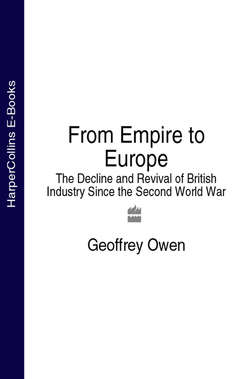Читать книгу From Empire to Europe: The Decline and Revival of British Industry Since the Second World War - Geoffrey Owen - Страница 17
Continuity and Change
ОглавлениеThe policy choices made in Germany, France and Britain in the 1940s and early 1950s flowed from the lessons which each country drew from its experience before and during the war. The shock to the political and economic system was far greater in France and Germany than in Britain, and the break with the past more complete. There was a strong desire in both countries to correct the errors which were responsible for earlier disasters. In France this meant state-sponsored industrial modernisation; in Germany, the decentralisation of economic power, with strict rules for the conduct of fiscal and monetary policy and a strong emphasis on competition. In both countries, too, European political and economic integration was given a high priority, as a means of preventing further wars and as a competitive stimulus for industry.
There were many differences between the two countries. France nationalised the leading banks and financial institutions, Germany did not. France adopted a system of indicative planning, Germany did not. Germany reformed its labour relations system, France did not. While Germany was cutting its tariffs unilaterally, France remained one of the most highly protected countries in Europe until the formation of the Common Market. The fact that both countries grew very fast despite these differences cautions against putting too much weight on particular reforms as a source of economic success. But the continuity with pre-war institutions and policies was greater in Britain than in either France or Germany, and this had an important impact on industrial performance, as the next ten chapters will show.
